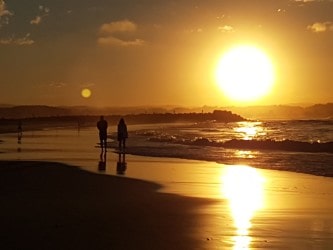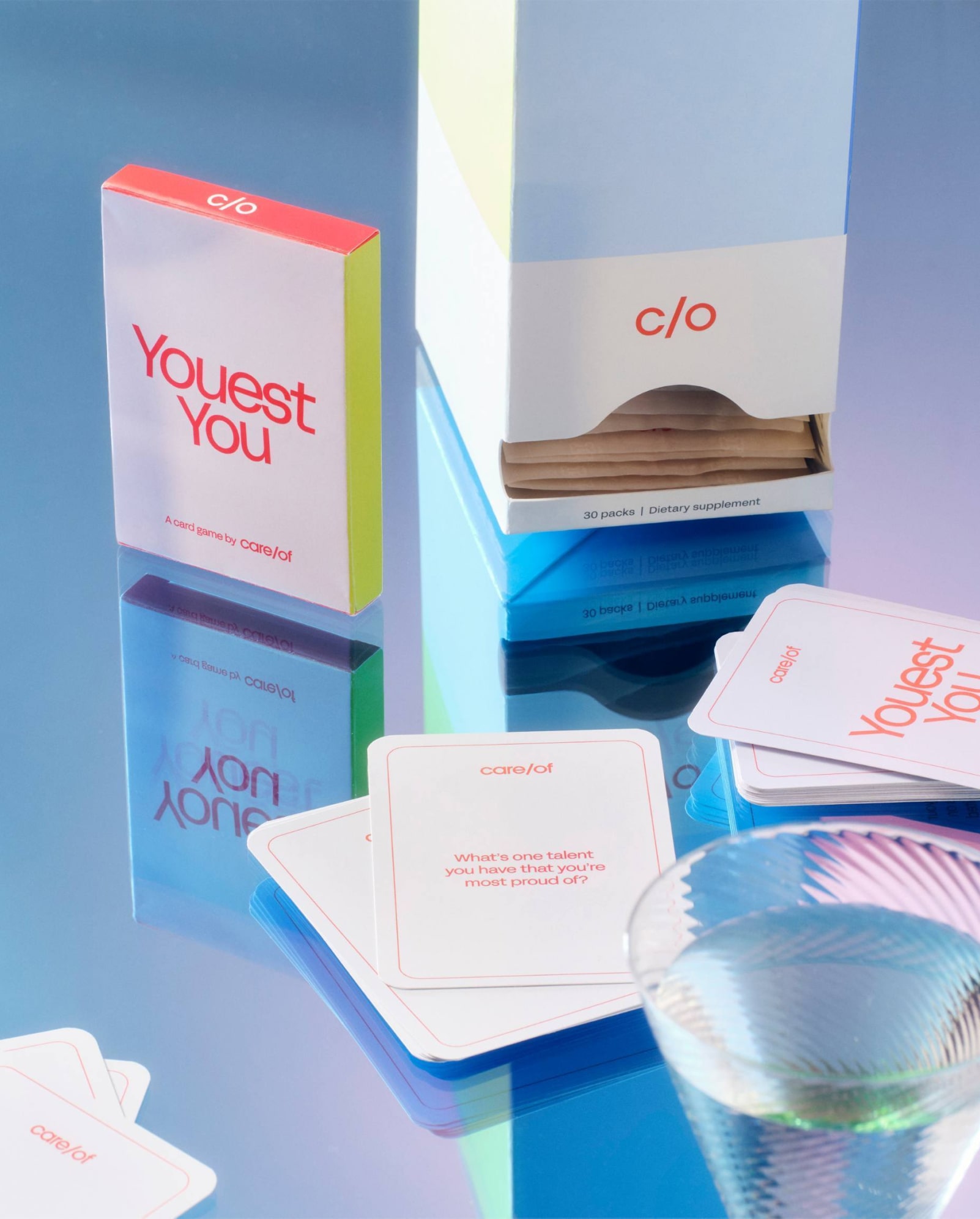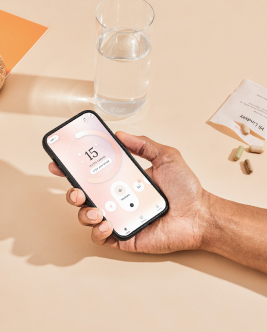lifestyle
Looking For More of the Sunshine Vitamin? How to Safely Get Vitamin D from the Sun
On This Page

The body makes vitamin D when skin is exposed to sunlight, but what is a safe amount of sun time? What sun variables make a difference in vitamin D production?
For decades now, we’ve been cautioned about the damaging effects of the sun’s rays – and for good reason.. Consistently following good sun protection rules is an essential part of any wellness routine. However, since sunlight plays an essential role in vitamin D production, we also need to make sure we soak in enough rays to allow the body to maintain proper levels of this important nutrient. There are some practical and easy-to-follow strategies for staying sun safe while encouraging proper vitamin D levels.
Does sunshine really give you enough Vitamin D?
To answer this question, it’s first important to understand what vitamin D is and how the body produces it with the help of sunlight. Vitamin D is a fat-soluble nutrient which has many forms. The commercially available versions of well known forms of vitamin D are D2 and D3. When looking at the digestive system, there are some less known forms exclusively made in the gut, ranging from D4 to D7. Vitamin D3 is the type that is produced naturally by the body. It aids many important functions in the body, helping the body absorb calcium, supporting strong bones. It also helps muscles and nerve cells do their jobs and plays a critical role in how well your immune system works.
Sunlight is the best natural source for vitamin D production. There are actually only a small group of foods that naturally contain vitamin D. Instead, you’ll find foods, such as cereal and milk, fortified with vitamin D.
Sunlight that reaches our skin contains ultraviolet A and, in a much smaller quantity, ultraviolet B (UVB) rays. That’s because the ozone layer of our atmosphere absorbs most of the UVB radiation from the sun. Although both can be dangerous to the skin, UVB rays carry more energy in them and can cause sunburn. However, UVB rays are also used by the body to synthesize vitamin D. Skin cells use UVB rays to convert cholesterol in the cells to a form of vitamin D3, which is then synthesized by the liver and kidneys. The good news is that you don’t need to stay out in the sun long enough to get a sunburn for the body to take in enough UVB rays to produce vitamin D3.
And yes, studies show that natural sunlight is the best way to allow your body to produce enough vitamin D3. This also means that simulated sources of light just aren’t the same, only allowing for significantly less formation of vitamin D3.
Are Low Levels of Vitamin D Common?
Vitamin D deficiency is quite common, with somewhere between 25% to 50% of people having inadequate blood levels of vitamin D. Breastfed babies, older people, people with darker skin tones, those who cover the majority of their bodies in clothing, and overweight people are more likely to have lower levels of vitamin D.
One study refers to vitamin D deficiency as an “ignored epidemic” that constitutes a global health problem. Although our bodies process UVB light less effectively as we age, most of the contributing factors to low vitamin D levels involve UVB light not reaching the skin cells for synthesizing. This can be caused by:
- The use of sunblock that is designed to protect the skin from UV radiation
- Window glass in homes, cars, and offices that block UVB radiation
- Clothing covering the skin
Even in the height of summer, when UVB radiation is at its strongest, these blockers essentially prevent UVB rays from reaching the skin.
Does wearing sunblock reduce vitamin D?
It’s important to note that just because UVB radiation is necessary for vitamin D production and sunscreen inhibits its absorption, this isn’t a reason to toss out those sunscreens. Sunblock is still an essential part of any health routine. UVA radiation, for instance, is linked to skin aging and pigmentation. It can also penetrate deep into skin tissue and cause free radicals to damage cells. UVB radiation causes sunburn and damage to our cells’ DNA. It can be somewhat confusing to think of UVB as both beneficial and potentially dangerous at the same time.
The key is moderation. A long day at the beach, for instance, still demands sunblock. However, if you’re taking a quick 10-minute stroll around the block, it may be more appropriate to forgo sunscreen for a few minutes of unprotected sun exposure. You can also opt for a lower SPF, which still provides protection without entirely blocking UV radiation.
Skin color and vitamin D production
Just as sunscreen can block UV rays, the body’s own skin color can provide a similar barrier to UVB absorption. Melanin is the substance in skin that gives it its color. The more melanin the skin has, the darker the skin appears. Melanin can filter out UVB radiation, so people with dark skin can have more of a challenge absorbing vitamin D from the sun. This means that if you have dark skin, you may want to spend more time in the sun to compensate for the smaller amount of UVB rays reaching the cells of the skin.
To determine the skin’s sun sensitivity, dermatologists may use the Fitzpatrick sun-reactive skin typing (FST), which provides an inexpensive skin color measurement. However, it’s important to note that this scale has several limitations for people of color and should not be used for determining health risks.
Latitude and vitamin D production
Some areas of the planet receive less intense sun than others because of the spherical shape of the planet and how the ozone interacts with the sun’s rays. People who live at the equator (where the Earth is closest to the sun), for instance, receive the most direct sun. Conversely, the further away someone lives from the equator, the less direct sunlight they receive and the more the ozone layer absorbs UVB rays. This may in fact be a more important variable than the seasons, particularly for those close to the equator. One study showed that lower latitudes receive an equal amount of UV radiation in the winter as they do in the summertime. Another paper warned that for higher latitudes during winter, the sun provides no useful rays for vitamin D production.
Best time of day to get sunshine
You may have heard it’s important to limit your sun exposure during the peak rays of the day. This is typically between the hours of 11 a.m. and 2 p.m. particularly during the summer months. However, this may be the best time of day to get those UVB rays for vitamin D synthesizing. The key is making sure your unprotected sun sessions (without sunblock) are short in duration. The sun will be at its highest at 12 p.m. so it makes the perfect time for a lunch break stroll, which also keeps you from being too sedentary and adds some steps to your day. It will also ensure that you don’t stay out in the sun too long.
When you do go out for brief sessions of sun exposure, make sure at least 40% of your skin is exposed to the sun’s rays and not covered by clothing. Because your head isn’t able to absorb much of the sun’s UVB rays, it can be a good idea to cover your head and use sunscreen on the more delicate areas, such as your face and neck. Allow the skin on your arms and legs to do the work of absorbing and processing those UVB rays. During fall and winter, when the sun’s rays are less strong, you may need to increase your time outside, but not to the point of sunburn.
When to consider taking a vitamin D supplement
While the body naturally produces vitamin D3 with the use of UVB radiation from the sun, vitamin D supplementation is also an option. The Food and Nutrition Board (FNB) at the National Academies of Sciences, Engineering, and Medicine (NASEM) recommends daily intake of 600 IU of vitamin D. It’s a good idea to get your vitamin D levels checked with a blood test, but supplementing is a good option for most people, particularly if you:
- Don’t get much sun
- Always wear sunblock
- Have darker skin
- Live far from the equator
- Live in an area with significant pollution and poor air quality (UVB rays get blocked by pollution in the air)
Care/of offers two good vitamin D options. Our vitamin D supplement is vegetarian and includes a prebiotic plant fiber called acacia for better digestion and absorption. There’s also a vegan option that is sustainably sourced from algae.
You don’t need to worry about getting too much vitamin D from the sun, fortified foods, or a daily vitamin D supplement. Vitamin D toxicity only generally occurs by intentionally taking a large amount of supplement over a long period of time without any guidance from a healthcare provider.
Key takeaways
Does sunshine really give you enough Vitamin D? This depends on many factors, including the color of your skin, your geographic location, how you dress, how much time you spend in the sun, and the air quality where you live.
The sun’s ultraviolet-B radiation is effectively used by the body to produce vitamin D3. However, as we age, we absorb it less efficiently. Foods like milk are often fortified with vitamin D, but many people still don’t get enough. Since vitamin D helps the body absorb calcium and keeps our bones strong while supporting nerve and immune functions, it’s important to get an adequate supply. Exposing around 40% of the body’s bare skin to midday sun for around 15 minutes a day can provide a good source of vitamin D. However, a daily vitamin D supplement, like Care/of’s vitamin D, can help fill in the gaps.



